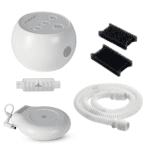While sound sleep is more important than ever during pregnancy, this period brings profound physical and mental changes that can make it difficult to find a comfortable sleeping position. A growing baby bump, leg and back pain, and heartburn are just some of the factors that contribute to discomfort as pregnancy progresses.
Researchers have found benefits and drawbacks for different sleeping positions during pregnancy. Most experts recommend sleeping on the left side with the knees slightly bent, particularly as pregnancy progresses. Left side sleeping takes pressure off the liver and enhances blood flow for the mother and the baby. One study found that 91% of people sleep on their side by the last week of pregnancy, in line with public health recommendations.
Guide to Sleeping While Pregnant

- 1 Begin side sleeping, which is considered the best pregnancy sleep position.
- 2 Sleep on your left side to improve circulation and ease liver pressure.
- 3 Use pillows or an adjustable bed for better support and pressure relief.
The physical changes of pregnancy can happen quickly and make it difficult to find a comfortable sleeping position.
Can You Lie on Your Stomach While Pregnant?
There is little research on the impact of lying or sleeping on your stomach while pregnant, but at some point the position will likely stop being comfortable due to the growing baby bump. Studies suggest it is very rare for people to sleep face-down in late pregnancy.
In the first and second trimesters, using a supportive round pillow to prop up the growing belly may make it more comfortable to sleep on your stomach.
Sleeping Positions to Avoid While Pregnant
Experts advise against sleeping on your back during pregnancy, particularly after the 28th week of pregnancy.
Emerging research suggests back sleeping during pregnancy may be associated with a higher risk of low birth weight and late stillbirth, since this position compresses the vena cava and reduces blood flow and oxygen delivery to the fetus. Back sleeping may also contribute to sleep-related breathing difficulties for the mother, which can increase the risk of pregnancy complications such as preeclampsia.
Experts believe the risk of stillbirth from back sleeping may be more pertinent for fetuses who are already vulnerable and whose mothers have one or more accompanying risk factors. The risk of stillbirth decreases with frequent nighttime bathroom trips, possibly because these provide a brief respite from an extended sleep position.
There is conflicting evidence about sleeping on your right side during pregnancy. This position exerts more pressure on the aorta and the vena cava, though not to the same extent as back sleeping. Some studies have found a correlation between right-side sleeping and higher rates of late stillbirth, but other studies have found that right-side sleeping is equally preferable to left-side sleeping.
Tips for Sleeping While Pregnant
Sleeping while pregnant can be difficult. Although sleeping medication and herbal remedies are best avoided while you are pregnant, certain habits may help you get better sleep:
- Prop Up the Baby Bump: Pillows or rolled-up blankets placed under your belly, between your legs, or at your back can provide support when lying down. Pillow manufacturers offer a number of designs specifically intended for pregnant people.
- Ease Pressure Points: Although you should aim to mostly sleep on your left side, you can relieve pressure points in the hips by temporarily sleeping on the right side.
- Practice Good Sleep Hygiene: Keeping a consistent sleep schedule, avoiding caffeine, and choosing a relaxing activity to help you wind down in the evening may help improve sleep.
- Avoid Large Evening Meals: Eating or drinking too close to bed may cause heartburn. However, a few crackers can help reduce nausea at bedtime.
- Move to the Other Side of the Bed: If sleeping on your left side does not come naturally, you may find it easier to adopt this position by lying on the left side of the bed.
Sleep deprivation in pregnancy may come with its own risks, including a higher chance of depression, preterm labor, and gestational diabetes. Speak to your care team if you are having trouble finding a comfortable sleep position during pregnancy. They can provide advice that is tailored to the needs of you and your baby.
References
Ask the Sleep Doctor
Have questions about sleep? Submit them here! We use your questions to help us decide topics for articles, videos, and newsletters. We try to answer as many questions as possible. You can also send us an email. Please note, we cannot provide specific medical advice, and always recommend you contact your doctor for any medical matters.




































